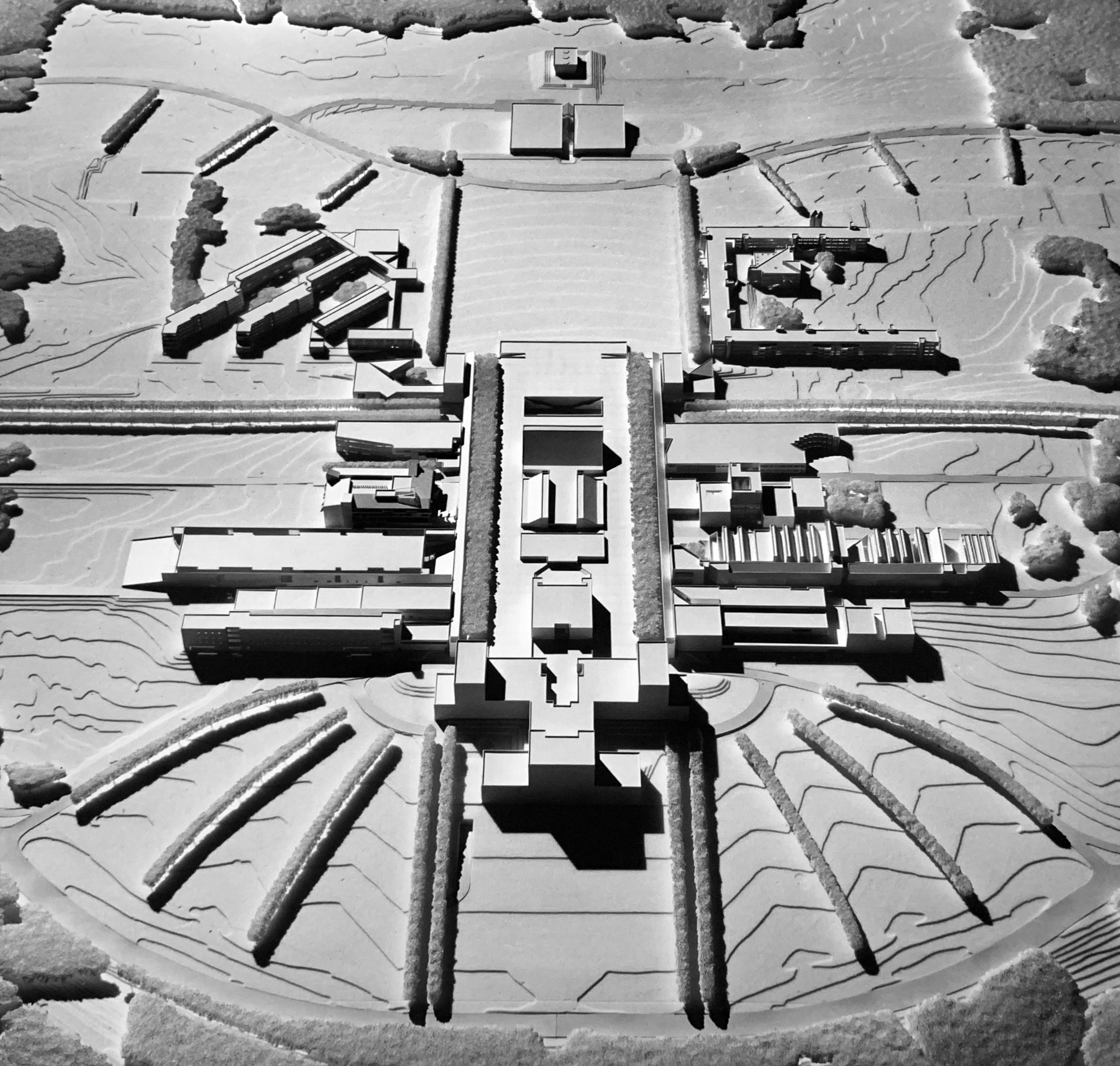SAHANZ/UHPH Joint Conference 2022
A Moderate’s Megastructure: Edward Larrabee Barnes and the Planning of
SUNY Purchase, New York, 1967-71
Virtual Conference Presentation, November 2022

In
the 1960s United States, university campuses were seen as testbeds for urban
spatial and social relations, and their master plans were therefore a prime opportunity
for their designers, usually architects, to realize urbanist visions. Initiatives
from this period remain staggering in their scale and architectural ambition. The
State University of New York system a massive expansion on more than 50 campuses
across the state during the tenure of Governor Nelson Rockefeller. The most
ambitious of its new campuses was its flagship arts college at Purchase, about
25 miles north of Manhattan, master planned by architect Edward Larrabee Barnes.
Mimicking Thomas Jefferson’s famous design for the University of Virginia, the
master plan symmetrically arrayed buildings for different disciplines around a
massive paved plaza. Along the plaza’s centerline, Barnes himself designed an
interconnected complex for students’ everyday needs. Flanking this was a
concrete-framed arcade onto which buildings by other leading architects abutted.
Barnes’ plan challenged these architects with prescriptive requirements
intended to engender a cohesive and consistent atmosphere, including the
dictate that all buildings be clad in the same gray-brown brick, and that all
openings be framed in dark gray glass and metal trim. These prescriptions were
a negative image of “architecture” as understood in this particular place and
time: a stable regulatory regime within which architects could be liberated,
within reason. Barnes’ design was a moderate’s version of a megastructure, intended
to manage creative impulses—both those of other architects and of art students—rather
than set them free. If the eternal problem of planning is to offer a vision for
the future loose enough to adjust to the unexpected, then the vision offered
here was the controlling gaze of a paranoiac. Is the master plan inevitably a
tool of management, or can it be a liberatory document instead?
Model of Barnes’s final SUNY Purchase master plan with designs by several other architects, prepared for the Museum of Modern Art exhibition “Architecture for the Arts,” 1971.
Model of Barnes’s final SUNY Purchase master plan with designs by several other architects, prepared for the Museum of Modern Art exhibition “Architecture for the Arts,” 1971.